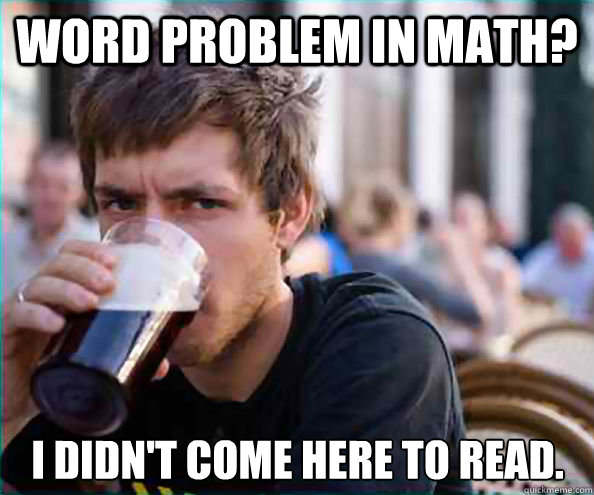This
class really challenged my view of content area literacy in the classroom.
Before taking this course, I had never considered how literacy would look in my
math class. I didn’t really think that reading was relevant or important to
consider when teaching math. I came in with the mindset that incorporating
reading into my math content area was irrelevant and unnecessary. Now, I have
such a better understanding of why reading is important and relevant in ALL
content areas, not just ELA.
One
of the first things that I learned in this class is that reading is everywhere.
It is the foundation of learning and if a student can’t read, it is significantly
harder for them to learn. In a math class, there is way more reading to be done
than I ever realized. For example, reading a math text book can be such a
daunting and confusing task. In our textbook, Subjects Matter, it explains how textbook reading needs to be
accompanied by reading activities or some sort of guided material. I learned
that to make any text worthwhile, it needs to be intentional and have a reason
for doing it. When assigning reading in a textbook, it is so important to not
over load students with reading but to only have them read what is important.
One of the most practical strategies I learned for assigning textbook reading
is a guide-o-rama. This consists of essentially creating a guide for students
to use as they navigate through the textbook. It points out important things
and includes footnotes that allow students to get the most out of what they are
reading.
One
of my favorite things I learned in this class is the strategy “think-alouds”.
This could be so useful in a math class because navigating word problems can be
one of the most challenging things in math. By reading through a problem with
students and being able to model thinking that highlights the main parts of the
problem, I think it would help diffuse the mass confusion that can occur. This
is something that I never really though of as being a potential issue but if
students can’t read a problem and understand what it is asking, then they can’t
be successful in math. As a future math teacher, I HAVE to care about whether
or not my students can read for the sake of their overall learning.
Another
thing I realized in this course is that having students read math-related
content is an awesome way to connect math to the real world. Oftentimes,
students struggle with the motivation to do math because they don’t see the
purpose in it. I think it would be such a good idea to have students read articles
about math in the real world because it shows why math is important. Some of
the most valuable things I have learned so far have been the reading strategies
that can accompany all sorts of texts in order to engage students. One of my
favorite reading strategies was the “sketch the text” strategy. I think this
would be so useful to have students do when reading a word problem. It would really
help them visualize what is being asked. Another one of my favorites is the
admit/exit slips. I think using these in my class would be a great way to
formatively assess the progress of my students on a specific day.
Overall,
this class really allowed me to open my mind to the ways literacy effects my
classroom. By providing my students with reading strategies, I am allowing them
to learn and succeed in my classroom. Reading is a great way to introduce
topics into my class and allows me to move away from traditional lecturing that
is found in math classes. I am so grateful for what this course has taught me
and truly hope to use so much of what I have learned in my math class.
659

Comments
Post a Comment